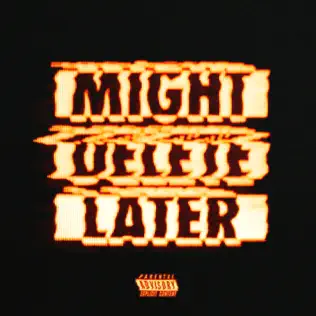Katy Perry’s second album, Teenage Dream, is a force to be reckoned with: Each of its successive singles has climbed to No. 1 on the Billboard Hot 100, the definitive measure of a song’s commercial success. Some might think it a surprising accomplishment given that one of the songs, “Firework,” poses the simple philosophical quandary: “Do you ever feel like a plastic bag?”
So Katy Perry songs aren’t necessarily known for their lyrical heft. Likewise, it’s unlikely you’ll find a defense of any of her songs much weightier than a tossed off, “It’s a guilty pleasure,” or “It’s really catchy.” But those excuses, particularly the latter, are telling of just what her main producer, Dr. Luke, wants you to feel. That ability to hook you despite inane lyrics is the result of masterful music production. There’s a technical mastery at work creating these pop hits, a skill great enough that we should reconsider how we measure the quality of song craft.
Creating a modern pop hit is an inexact science, but if you take some of the best pop songs of the last decade — Britney Spears’ “Toxic,” Kelly Clarkson’s “Since U Been Gone” or Miley Cyrus’ “Party in the U.S.A.” — there seems to be a recurring set of elements: a strutting, danceable beat, a hook-laden chorus and an anthemic rush of energy right around the bridge.
All three songs are from three different, successful super producers: Swedish production duo Bloodshy & Avant (“Toxic”), Dr. Luke (“Party in the U.S.A.”) and his mentor, Max Martin (“Since U Been Gone”). Collectively, their music has a singular goal: make music so impossibly catchy as to consume you entirely, the ridiculous pop starlet singing be damned. These songs are not the result of following a formula but of skillful producers working their technical magic.
Case in point: Ke$ha’s “TiK ToK.” The accolades awarded this megahit, where pop’s poster child for personal hygiene brushes her teeth with a bottle of Jack Daniels, are numerous and its cultural dominance is undeniable. Certified five-times platinum in the U.S., it spent nine weeks at No. 1 and is currently the sixth-best-selling song in digital history. No, the world isn’t doomed to vapidity and cheap thrills — there will always be the kind of cerebral music heralded by sites like Pitchfork. In fact, those songs and albums routinely find themselves on critics’ year-end top 10 lists.
It’s unfair to hold mainstream pop and indie acts to the same qualitative standard because in most cases they have completely different goals. The work put into making the new Arcade Fire and Britney Spears albums offers a stark contrast: both albums have memorable tracks, existing in vastly different sonic spectrums; both were given four-star reviews by Rolling Stone.
If you’re willing to take a few steps back, you’ll marvel: “TiK ToK” is kind of brilliant. Yes, plenty have argued that Ke$ha’s dance style is lifted straight from electronic artist Uffie, but the greatness of “TiK ToK” is a separate success that owes nothing to her. It represents the success of taking that inspiration nearly to its saturation point for maximum effect; his technical skill accomplished the difficult task of creating a hit song. Your almost subconscious mouthing of the lyrics, wherever you hear it, is the result of a careful creation of beats, hooks and words. It’s a piece of art.
But since when was music not informed by other music? The animus flung at pop music seems to stem from frustration: “‘Since U Been Gone’ stole the guitar riff from the Yeah Yeah Yeahs’ ‘Maps’ and Kelly Clarkson is just a pimped-out, bourgeoise poser.”
Sure, Kelly Clarkson may have a nice steady stream of royalty checks for the rest of her life, but if you’re going to measure pop and indie music at different levels of quality, then measuring their respective success should be appropriately adjusted. Success for a Kelly Clarkson song and success for a Yeah Yeah Yeahs song are two different things. “Since U Been Gone” was a major Billboard, and thus commercial, hit; critics consider “Maps” of the greatest love songs of the last decade.
There’s no reason the appreciation of the craftsmanship of pop and indie music have to be mutually exclusive. When Pitchfork makes its annual best of the year song list, a nice handful of catchy pop songs make the cut alongside the indie ones. Musical taste may be subjective, but the apparent skill at work in some modern pop songs isn’t.




















